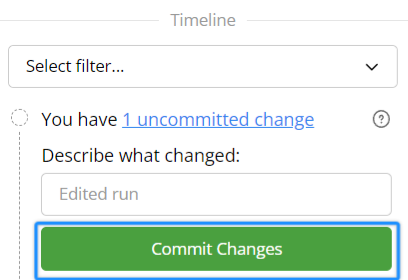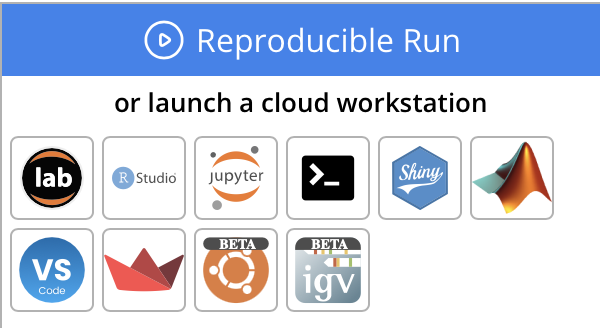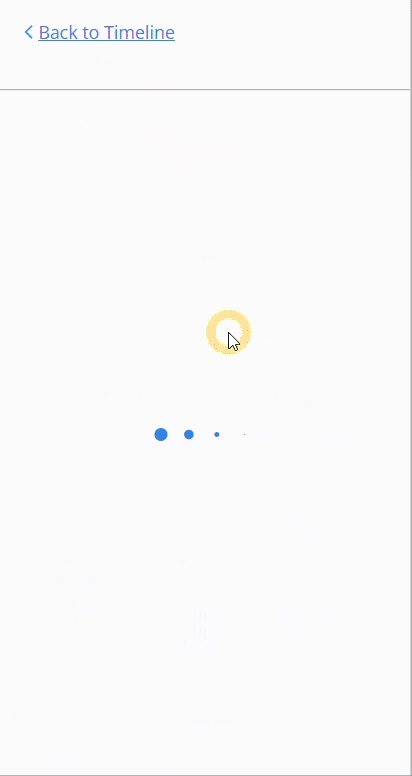Reproducibility Panel
Within the Reproducibility Panel, the Timeline provides a managed history of the Capsule, including its creation, runs, releases, and prompts commit changes and version management via the use of Git for version control.
The 1-Click Commit
Every edit from the IDE is automatically saved and staged in Git by default to the Capsule's corresponding Git repository. The Commit Changes button appears in the Timeline after each new edit.
1. In Describe what changed, explain your actions, or leave the default commit message.
2. Click Commit Changes to commit your changes to the Git history stored in the Capsule and push the commits to the Capsule's Git repository.
Viewing Changes
View Committed Changes
Click committed to display the status update of committed changes. In the image below, you can see the files that were added.
Click Back to Timeline to return to the IDE.
View Uncommitted Changes
Click on the
runfile in the left section.Copy and paste
# view the power of gitto line 10.
In your Timeline, you’ll see one uncommitted change, which is the piece of code you added. Click 1 uncommitted change to see the details.
Click the down-arrow and from the menu select View Changes. A Git compare view will open up in the middle workspace. Here you can view the changes you made.
Timeline Events Filter and Search
Events in the Timeline can be filtered to show All events, Commits, All Runs, My Runs, or Releases. The search bar can be used to search computation names of Reproducible Runs, commit messages, and release versions to further select what is visible in the Timeline.
Reproducible Runs and Cloud Workstations
At the top of the Reproducibility Panel are code execution options for your Capsule to work with your specific capsule files, environment and compute resources.
With your capsule contents and configuratio, you can execute a run script beginning to end via a Reproducible Run, or you can work in a popular programming IDE for more in depth development with a Cloud Workstation. For more detailed information on the two functionalities refer to the following pages:






